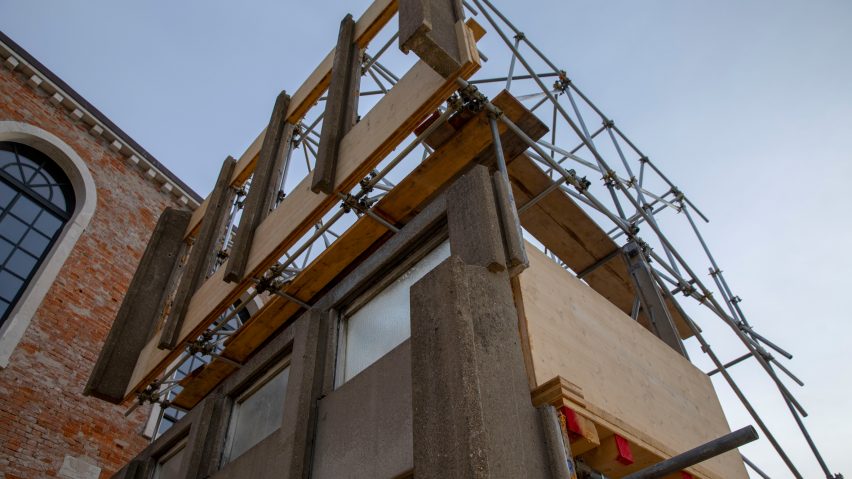
V&A unveils huge section of demolished Robin Hood Gardens at Venice Architecture Biennale
Visitors to the Venice Architecture Biennale can walk the "streets in the sky" of London's Robin Hood Gardens, as the V&A museum has shipped a huge chunk of the brutalist housing estate to Italy.
As the showpiece of the exhibition Robin Hood Gardens: A Ruin in Reverse, the fragment is the facade of one flat from the famous brutalist estate, which was built by architects Alison and Peter Smithson in 1974, but which is now midway through demolition.
The various elements of the structure are held in place by a complex scaffolding system, devised by Arup engineers. This makes it possible for biennale visitors to climb up onto one of the raised walkways that were a key feature of the design.
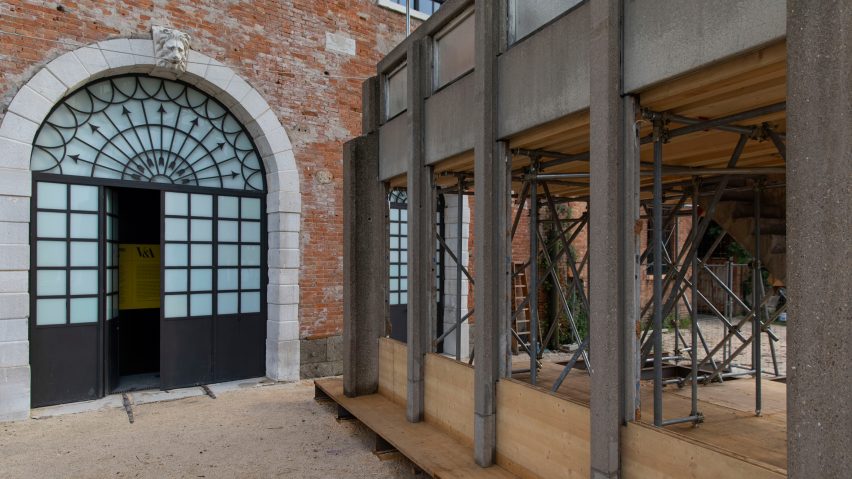
The V&A announced that it was acquiring part of Robin Hood Gardens shortly before demolition started in December 2017. As well as this section, which was extracted specifically to exhibit in Venice, the museum has also taken all the components to reassemble an entire one-bedroom flat.
It has not been announced when this larger fragment will be revealed to the public. But it will contain the modular furnishings installed when the building first opened, as well as the concrete structure and facade.
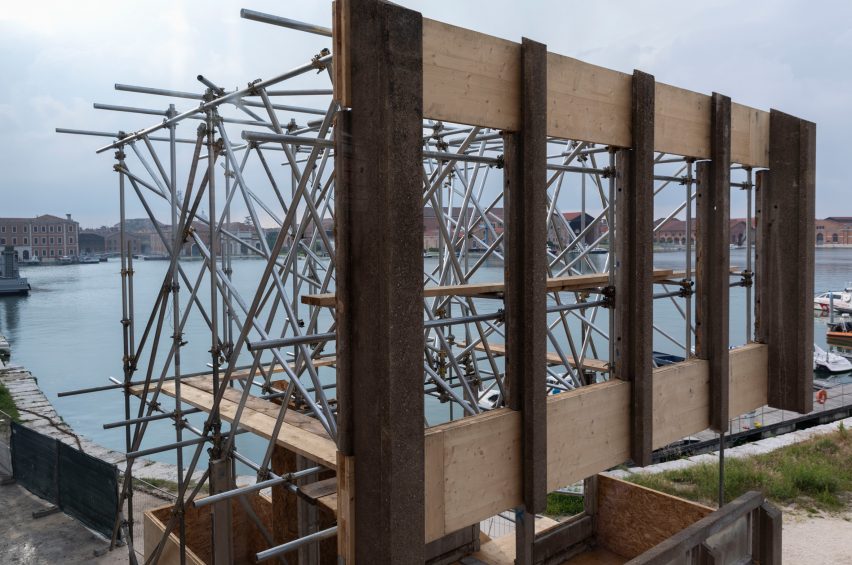
Robin Hood Gardens was made up of two concrete slab blocks, arranged on opposite sides of an expansive garden. The broad walkways, described as streets in the sky by the Smithsons, were intended to foster the same street life of London's traditional terraced houses.
It is being demolished to way for a new housing development by Swan Housing Association, despite a long campaign to have the building heritage-listed, supported by many famous architects.
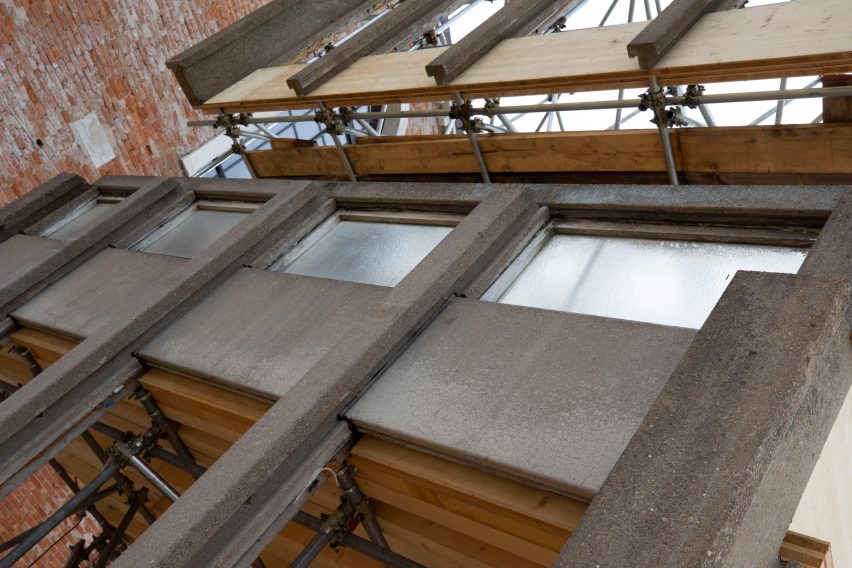
This exhibition, located in the Arsenale area of the biennale, aims to explore the legacy of the estate and question whether or not it offers a model for social housing of the future.
"The case of Robin Hood Gardens is arresting because it embodied such a bold vision for housing provision, yet less than 50 years after its completion it is being torn down," explained curators Olivia Horsfall Turner and Christopher Turner.
"Out of the ruins of Robin Hood Gardens, we want to look again at the Smithsons' original ideals and ask how they can inform and inspire current thinking about social housing."
The curators were careful to try to avoid "fetishising" the concrete structure and wanted to instead focus on how the building supported the lives of its residents. So the exhibition also includes a series of photographs and films, offering a look at the building at different stages in its history.
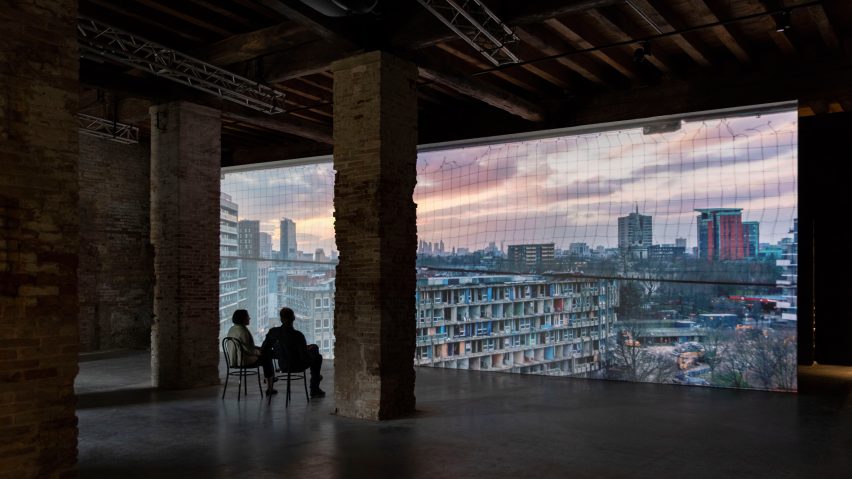
One film shows four apartments occupied by long-term residents, made by Korean artist Do Ho Suh, who is known for his intricate wire-and-fabric recreations of interior spaces.
Another is the BBC's 1970 documentary, The Smithsons on Housing, which explores the social thinking behind the design.
"We've tried to map the whole arch of the Smithsons' vision, the twists and turns of the estate's history and its fate and evaluate that as a whole," Turner told Dezeen.
"This was the golden era of the welfare state. This is when architects in Britain were most empowered to create extraordinary buildings at a massive scale," he continued. "Estates like Robin Hood Gardens, Alexandra Road [by Neave Brown] are amazing architectural achievements."
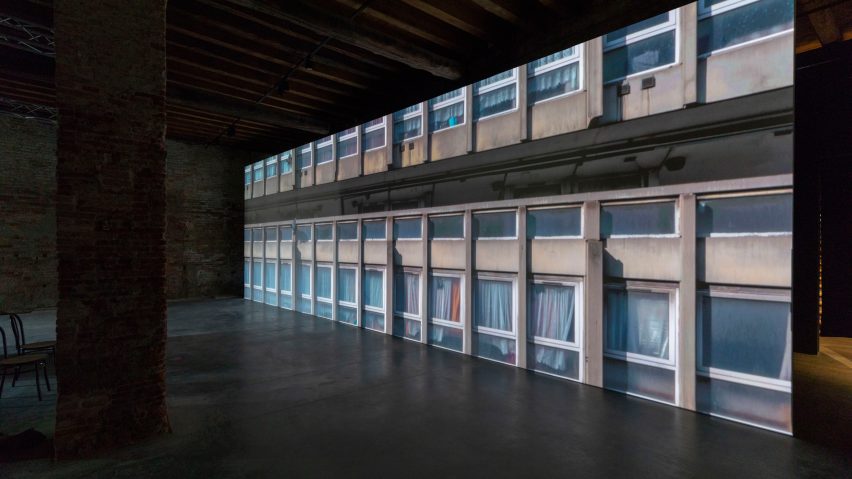
In the context of London's present housing crisis – both the shortage of affordable homes and the neglect of council-owned properties such as Grenfell Tower – the exhibition seeks to explore what lessons can be learnt from the estate.
"We were really interested in the Smithsons' generous architectural and social vision and in unpacking that and using that as a lens to look to the future of social housing," said Turner.
The V&A museum is located in the London borough of Kensington and Chelsea, not far from Grenfell Tower. Just 10 council homes have been built in the borough since former British prime minster Margaret Thatcher gave council tenants the right to buy in the 1980s, explained Turner.
"How can we look at what is preventing us from being able to create affordable housing for all in our society? That's the big question," he said. "Increasing land values means that is changing. We're asking what kind of a city we want to build now, what kind of provision we want to create for housing in the city that is available for everyone."
"One of the big differences between when the Smithsons were building and now is that councils had in-house architectural teams and so they were constantly working on projects that were for the councils," said Turner. "Almost 80 per cent of architects were working for the council and now its less that one per cent."
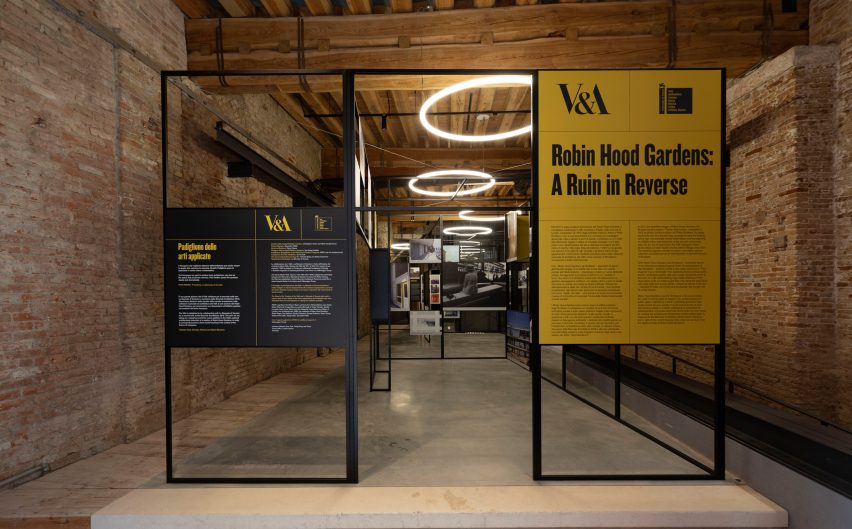
This is not the first time Robin Hood Gardens has been on show in Venice – the Smithsons exhibited an image of it during the Venice Art Biennale of 1976.
Writing about the estate at the time, they said: "A building under assembly is a ruin in reverse". This was the inspiration for the exhibition title.
Robin Hood Gardens: A Ruin in Reverse is on show until 25 November 2018, as part of the 16th Venice Architecture Biennale.
This year, the main exhibition is curated by Yvonne Farrell and Shelley McNamara of Grafton Architects under the title Freespace.
In an interview with Dezeen, Farrell and McNamara claimed that, while architects don't have the power to combat global issues, small projects can make a huge contribute to society.
Turner told Dezeen the generous innovations the Smithsons offered residents at Robin Hood Gardens encapsulates this idea of generosity.